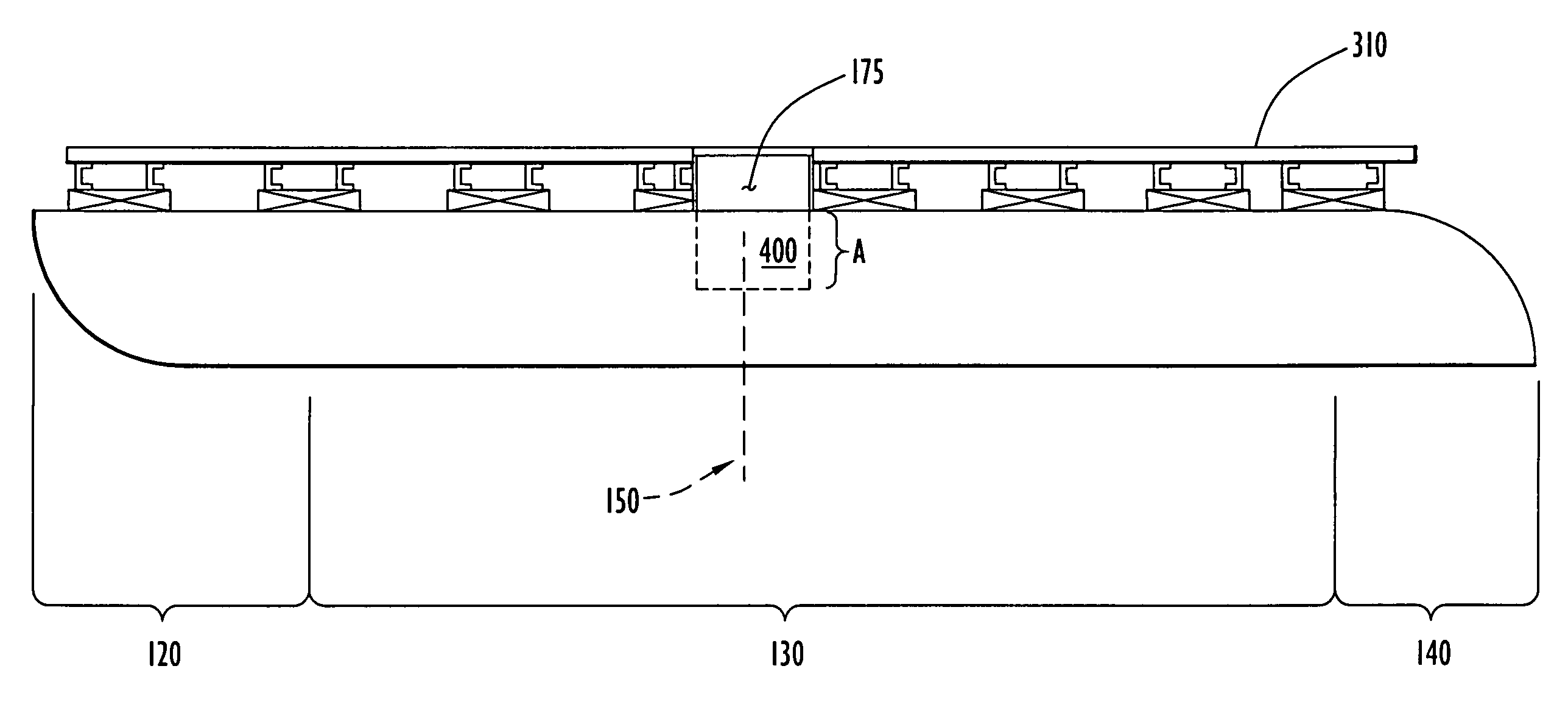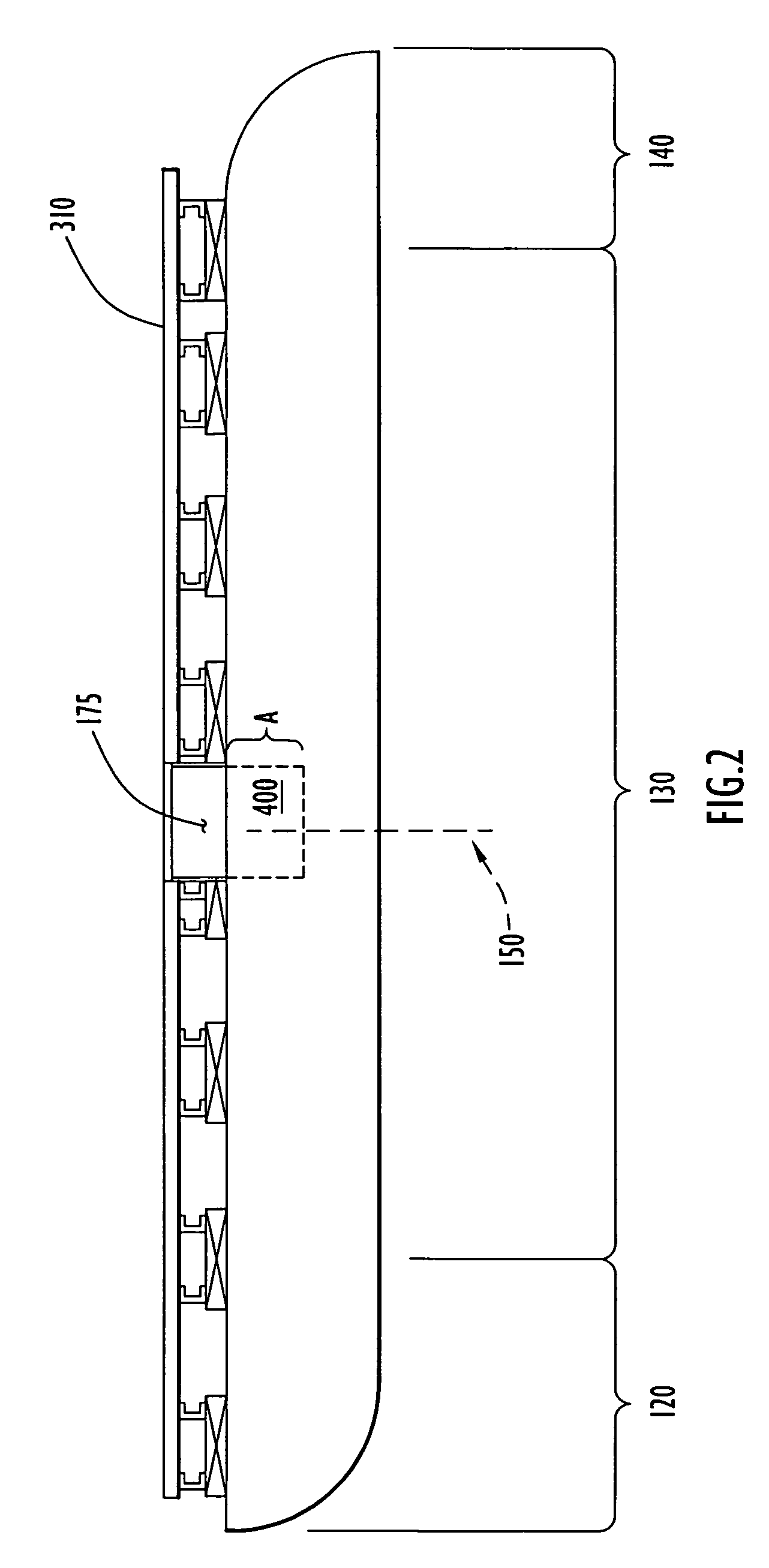Pontoon for watercraft
a technology for watercraft and pontoons, which is applied in the field of pontoons for watercraft, can solve the problems of electrically driven water vehicles, environmental damage to the very waters and ecosystems, and the inability of electric engines to compete with gasoline engines, and achieves the effects of pontoons, reducing the number of pontoons, and improving the service li
- Summary
- Abstract
- Description
- Claims
- Application Information
AI Technical Summary
Benefits of technology
Problems solved by technology
Method used
Image
Examples
Embodiment Construction
[0023]FIG. 1 is a perspective view of a watercraft according to an embodiment of the invention. As shown, the watercraft 10 generally comprises a pontoon section 100, a strut section 200, and a platform or deck section 300 including a deck 310 and a canopy 320. The pontoon section 100 includes at least one pontoon member or body 110 operable to buoy the watercraft 10 on water. By way of example, the pontoon 110 may comprise a hollow, generally tubular structure formed from buoyant material (e.g., aluminum). The internal space of the pontoon 110 essentially comprises a channel filled with air, which aids its buoyancy. The number of pontoons 110 comprising the pontoon section 100 is not particularly limited, and depends on the desired deck size, the intended passenger / load weight, and the desired traveling speed. By way of specific example, the pontoon section 100 may comprise two pontoons 110. Two pontoons serve to minimize the effect of drag on a moving watercraft 10, as well as enh...
PUM
 Login to View More
Login to View More Abstract
Description
Claims
Application Information
 Login to View More
Login to View More - R&D
- Intellectual Property
- Life Sciences
- Materials
- Tech Scout
- Unparalleled Data Quality
- Higher Quality Content
- 60% Fewer Hallucinations
Browse by: Latest US Patents, China's latest patents, Technical Efficacy Thesaurus, Application Domain, Technology Topic, Popular Technical Reports.
© 2025 PatSnap. All rights reserved.Legal|Privacy policy|Modern Slavery Act Transparency Statement|Sitemap|About US| Contact US: help@patsnap.com



